This question is related to this extend axis to 0 with geom_density_ridges2.
Here the OP asks to extend the x axis to show 0, 1, 2 to the existing scale.
While @stefan posted the correct answer using limits = c(-.5, 9.5),
I tried an alternative way to add the lacking 0, 1, 2, as new rows to value column of df adding this line to the code complete(value = seq(0, max(value), 1)) resulting :
library(dplyr)
library(tidyr)
library(ggplot2)
library(ggridges)
df %>%
complete(value = seq(0, max(value), 1)) %>%
ggplot(aes(x = value, y = item, group = item)) +
geom_density_ridges2(aes(fill = item),
stat = "binline",
binwidth = 1,
scale = 0.95) +
geom_text(
stat = "bin",
aes(
y = group + 0.95*stat(count/max(count)),
label = ifelse(stat(count) > 0, stat(count), "")
),
vjust = -0.5, size = 3, color = "black", binwidth = 1
) +
scale_x_continuous(
breaks = 0:9,
name = "Answer (higher = better)"
) +
scale_y_discrete(
expand = expansion(add = 2)
) +
scale_fill_viridis_d() +
labs(
title = "Example",
y = NULL
) +
theme_ridges(grid = FALSE) +
theme(
axis.title.x = element_text(hjust = 0.5),
axis.title.y = element_text(hjust = 0.5),
legend.position = "none",
plot.title.position = "plot",
plot.title = element_text(face="bold")
)
How can I remove the NA level while keeping the values for the x axis in the plot above?
data:
df <- df <- structure(list(id = c(1, 1, 2, 2, 3, 3, 4, 4, 5, 5, 6, 6, 7,
7, 8, 8, 9, 9, 10, 10, 11, 11, 12, 12, 13, 13, 14, 14, 15, 15,
16, 16, 17, 17, 18, 18, 19, 19, 20, 20, 21, 21, 22, 22, 23, 23,
24, 24, 25, 25, 26, 26, 27, 27, 28, 28, 29, 29), item = structure(c(1L,
2L, 1L, 2L, 1L, 2L, 1L, 2L, 1L, 2L, 1L, 2L, 1L, 2L, 1L, 2L, 1L,
2L, 1L, 2L, 1L, 2L, 1L, 2L, 1L, 2L, 1L, 2L, 1L, 2L, 1L, 2L, 1L,
2L, 1L, 2L, 1L, 2L, 1L, 2L, 1L, 2L, 1L, 2L, 1L, 2L, 1L, 2L, 1L,
2L, 1L, 2L, 1L, 2L, 1L, 2L, 1L, 2L), .Label = c("A", "B", "C",
"D", "E", "F", "G", "H", "I", "J", "K", "L", "M", "N"), class = "factor"),
value = c(8, 9, 4, 5, 8, 9, 7, 9, 8, 8, 7, 6, 9, 8, 9, 9,
9, 9, 8, 9, 9, 9, 8, 9, 8, 8, 7, 8, 8, 8, 7, 9, 8, 9, 8,
9, 9, 9, 9, 9, 8, 9, 9, 9, 9, 7, 9, 9, 8, 9, 8, 9, 7, 9,
7, 7, 7, 8)), row.names = c(NA, -58L), class = c("tbl_df",
"tbl", "data.frame"))


